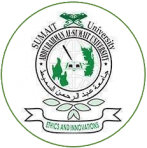MAKOSA YA KISEMANTIKI KATIKA MAANDISHI YA WANAFUNZI WAGENI WANAOJIFUNZA LUGHA YA KISWAHILI
Keywords:
makosa, semantiki, makosa ya kisemantikiAbstract
There have been a large number of students learning Swahili language in the world, this situationa caused by the development of science and technology including the rapid growth of the Swahili language in the world. During learning, various errors may arise. This article aims to explain semantic errors in the writings of foreign students learning Swahili language as well as the sources of those erroes. In this article documentary review and interview are the techniques used in data collection whereas the total of 24 students from The State University of Zanzibar (SUZA) and The Kiswahili na Utamaduni (KIU) centre were collected, and the total of 4 teachers were interviewed from those two centres, the author went direct to the field so as to collect those data. The data obtained were analyzed using descriptive approach and the observation revealed that there are a lot of semantic errors that happen in the writings of the foreign students learning Swahili language that are from different sources. Such errors include misuse of verb conjugation, the use of inappropriate vocabulary in the context, word-for-word separation, sound dropping, literal translation, word dropping, word linking and phonetic modification. And the sources being the effects of the first language, the difficulty of the second language rules and the lack of exposure among the students.Therefore, based on those findings the author has suggested appropriatemethods that wili help both the teachers and the stundents to identify the errors and their sourcesand work on them
Downloads
References
- Ahmed, M. & Zribi, C. (2013). Detection of semantic errors in Arabic texts. Artificial
- Al Shohbani, Y. & Al Shormani, M. (2012). Semantic errors committed by Yemeni University
learners: Classifications and sources. Internationa Journal of English Linguistics. 2,6.
- Aladin, A., Darus, S & Rajab, A. (2016). An Investigation of semantic interlingual errors in
the writings of Libyan English as a foreign language learners. Arab World English Journal. 7,
, 277-292.
- Aruba, B. (2017). Makosa ya kisemantiki katika mawasiliano andishi ya Kiswahili miongoni
mwa wanafunzi wa shule za upili: Mfano kaunti ya Kakamega (Tasnifu yaUzamili. Chuo Kikuu
Maasai Mara.
- BAKIZA. (2010). Kamusi la Kiswahili fasaha. Oxford University Press.
- Corder, S. (1987). Error analysis and interlanguages. Oxford University Press.
- Hanna, Y. (1986). Second language learning errors, their types, causes and treatment. JALT
Journal. 8,1.
- Jeptarus, K. &Ngene, K. (2016). Lexico-semantic errors of the learners of English: A survey
of standard seven Keiyo-speaking primary school pupils. Journal of Education and Practice.
,13.
- Kroeger, P. (2019). Analysing meaning. An introduction to semantics and pragmatics.
Language science Press.
- Leena, J. (2016). An analysis of semantic errors in Iraq EFL learners’ writings. Journal of ThiQar University. 11,4.
- Richards, J. (1974). Error analysis and second language strategies. Longman.
- TUKI. (2014). Kamusi ya Kiswahili sanifu. Oxford University Press.
- Wamitila, K. W. (2018). Kamusi pevu ya Kiswahili. Vide̴Muwa Publishers Limited.
- www.suza.ac.tz>school-of-kiswahili-foreignlanguage-skfl/
- www.udsm.ac.tz>thecentre-for-kiswahili-for-foreigners

